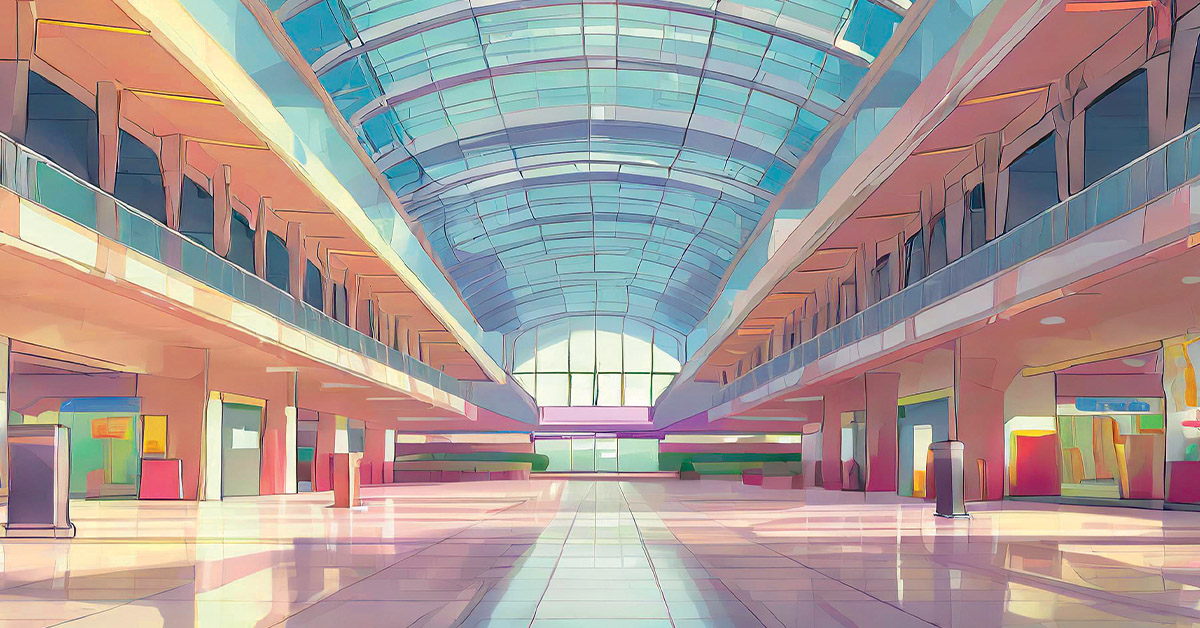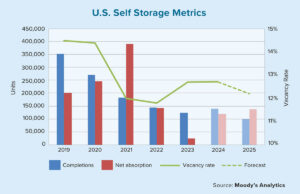If anyone needed more evidence of the continuing sad fall of the American mall, look no further than a recent report by CBRE Econometric Advisors that painted a grim picture for the iconic shopping experience. The January Intelligent Investment Chart of the Week offers a different way of measuring the scores of “dead” malls through the nation’s suburbs.
According to CBRE, retail is doing quite well, with the Lifestyle & Mall category boasting availability rates of between 5% and 6%. Lifestyle centers tend to be upscale shopping areas that might be described as malls that are open to the outside. They are booming in many locations. Malls are generally enclosed properties, and they are struggling. The report showed that 52% of the vacant retail space not available for leasing is in the Lifestyle & Mall category and the vast majority of that is, of course, malls.
Dan Diebel, an economist for CBRE Econometrics Advisors, and one of the report’s authors, said that as of the fourth quarter of 2019, about half a percent of the vacant retail space in the Lifestyle & Mall category fell into the unavailable-to-lease group, and that was an all-time high at the time. As of Q4 2023, nearly 4.4% of the space in the Lifestyle & Mall category was vacant and off the market. That equates to about 34.1 million square feet of retail space.
Undoubtedly some of these properties are being redeveloped. Most are obsolete, however, which means that the ranks of the zombie malls — properties that are no longer working malls but haven’t been redeveloped for other purposes — continue to proliferate across the country.
The actual number of U.S. malls appears to vary, depending on the source. Last year, the International Council of Shopping Centers had estimated that there were still 1,150 major malls operating in U.S. That is down from a high of 1,500 malls in the 1990s. Other sources say the U.S. peaked with 2,500 malls in the 1980s, and now has about 700.
“A lot of this obsolete space falls into the lower-end Class B and C malls that just don’t have the demand to support the properties,” Diebel said. “They cannot get retail businesses into them and thus cannot get the rents that they need to make them viable.”
This bifurcation of the mall industry, in which the Class A malls prosper, and all the other malls struggle to survive, is becoming the new retail reality. Class A malls and high-end lifestyle centers are both performing very well, especially those found in the Sun Belt, where they are enjoying strong sales from Florida to California, Diebel said.
Here are a few examples demonstrating this tale of two mall realities: In 2017, the 1.1 million-square-foot Galleria Mall in Pittsburgh Mills was sold to Wells Fargo for $100 — yes, $100. The bank was owed more than $142 million on loans to the project and had foreclosed on the property the year before. Wells Fargo was the only bidder in the five-minute-long auction. At the same time in Florida, the Triple Five Group, which owns the three largest malls in North America, including the Mall of America in Bloomington, Minnesota, was planning to build the American Dream Miami mall. Delayed by the pandemic and other issues, the $5 billion mall is now scheduled for completion in 2026 and will be the largest in the nation, encompassing 6.2 million square feet. Some of its amenities include three hotels, an amusement park, an indoor artificial lake and an indoor ski slope.
Real estate investment trusts that specialize in Class A malls showed strong occupancy levels and growth in their rental rates in 2023. Simon Property Group, the nation’s largest mall owner, saw its stock price rise nearly 22% for the 12 months, ending in February 2024.
While sales appear to be slowing somewhat in 2024, Diebel said this group still looks very healthy and the recent tick down in revenue is a sign of the retail sector settling back into a post-pandemic norm. When asked where the mall problem is most pronounced, Diebel didn’t hesitate with his answer — the Midwest.
“If you’ve ever lived in the Midwest or driven around the region, the mall overbuild was just drastic,” Diebel explained. “There are webpages devoted to the dead malls of the Midwest. There are Instagram accounts that are dedicated to exploring the obsolete and unoccupied malls and shopping centers of the Midwest. The creators of these sites may or may not be taking on legal risk. So, I’m certainly not promoting them, but they are out there.”
Vice Media was one of those sources. In the past, the site has documented decaying malls on such programs as host Rick McCrank’s “Abandoned.” One episode available on YouTube follows McCrank as he tours trashed malls in Cleveland, Ohio, calling it “the Mecca of abandoned shopping malls.” This dystopian vision was unthinkable when the mall retail revolution really kicked into gear in the 1950s. Over construction, online shopping and changing attitudes have dealt major blows to malls.
In 2017, some analysts were expecting a quarter of all malls to close in five years. Most malls, however, continue to hold on, morphing into other facilities, including hockey rinks and medical offices and just about anything you can imagine. After analyzing 135 mall redevelopment projects, real estate services company JLL found that most retain retail at the site, with more than half adding housing.
It remains to be seen when an equilibrium will be reached where there are the right number of malls in the right places to meet demand. In the meantime, we will have to continue to watch, possibly with a touch of nostalgia, the once-great gathering place for the consumer economy as it continues to morph into something new.
“Enclosed malls were a marvel of modern planning and urban design,” Diebel said when discussing the heyday of the mall-shopping experience. “It offered an urban lifestyle; it was its own little city that was clean and privatized. It had the feeling of a community.” ●








